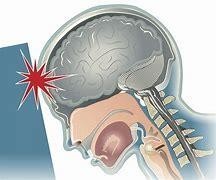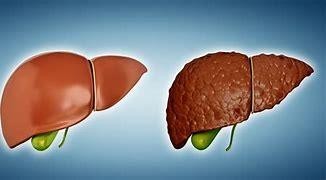A patient was involved in a fight and was hit in the head with a chair. The emergency room physician noted the following signs and symptoms:
A patient appears confused and does not remember being in a fight: the patient was brought in by a friend. The patient is having problems concentrating, dizziness, and flat affect. Which condition is indicated by the physician's findings?
Cerebral ischemia
Cerebral edema
Cerebral concussion
Cerebral hemorrhage
The Correct Answer is C
A cerebral concussion is a mild traumatic brain injury that occurs when a blow to the head causes the brain to move rapidly inside the skull, resulting in temporary changes in brain function. A concussion can cause confusion, memory loss, impaired concentration, dizziness, headache, nausea, blurred vision, and mood changes. Most concussions resolve within a few days or weeks with rest and monitoring.

Nursing Test Bank
Naxlex Comprehensive Predictor Exams
Related Questions
Correct Answer is D
Explanation
Cirrhosis is a chronic liver disease that causes fibrosis, nodular regeneration, portal hypertension, and liver failure. Cirrhosis can cause various symptoms and signs such as nausea, vomiting, abdominal pain, pruritus, edema, ascites, jaundice, spider angiomas, palmar erythema, gynecomastia, splenomegaly, varices, hepatic encephalopathy, and coagulopathy. Cirrhosis can also cause elevated liver enzymes such as alanine aminotransferase and aspartate aminotransferase due to hepatocellular injury or necrosis.

Correct Answer is ["A","B"]
Explanation
These two conditions belong to the disease classification of chronic obstructive pulmonary disease (COPD). COPD is a group of lung diseases that cause persistent and progressive airflow limitation and difficulty breathing. Asthma is a condition that causes inflammation and narrowing of the airways, leading to wheezing, coughing, chest tightness, and shortness of breath. Pulmonary emphysema is a condition that damages the alveoli (air sacs) in the lungs, reducing their elasticity and surface area, resulting in less oxygen exchange and more trapped air. Both asthma and pulmonary emphysema can be triggered by environmental factors, such as allergens, pollutants, tobacco smoke, or infections. The main difference between asthma and pulmonary emphysema is that asthma is reversible with medication, while pulmonary emphysema is irreversible and progressive.
Whether you are a student looking to ace your exams or a practicing nurse seeking to enhance your expertise , our nursing education contents will empower you with the confidence and competence to make a difference in the lives of patients and become a respected leader in the healthcare field.
Visit Naxlex, invest in your future and unlock endless possibilities with our unparalleled nursing education contents today
Report Wrong Answer on the Current Question
Do you disagree with the answer? If yes, what is your expected answer? Explain.
Kindly be descriptive with the issue you are facing.
